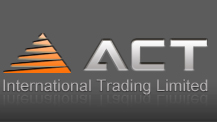Near-eye display is set to usher in a new era of market growth
According to the "2025 Near-Eye Display Market Trends and Technology Analysis" research report by TrendForce, the near-eye display device market is expected to show a lackluster performance in the short term. The global near-eye display device shipment is projected to reach 6.2 million units in 2025.
In the VR/MR market, the sales of Meta Quest 3s fell short of expectations. It is estimated that the shipment volume will drop to 5.6 million units by 2025. The short-term performance of AR devices is relatively stable. Driven by new AI+AR devices and the price reduction of OLEDoS products, the shipment volume is expected to reach 600,000 units in 2025. In the medium and long term, on one hand, as international giants such as Meta and Apple continue to develop new products, it will contribute to the improvement of the overall VR/MR market. On the other hand, the growth momentum of the reminder AR market is strong, coupled with the development of high-end full-color AR devices, it is expected that the global near-eye display device shipment volume will increase to 46.5 million units by 2030.
The development of the AR display technology market
The choice of AR display technology also reflects the brand's considerations and the development trend of the market. In the short term, OLEDoS, due to its cost advantage, remains the mainstream in the Chinese market. However, TrendForce's research firm believes that the development of other technologies will pose a threat to OLEDoS. In the short term, LCoS technology will also emerge in the market with the adoption of Meta, and the growth of green LEDoS for indication-type AR glasses also drives up the penetration rate of LEDoS technology. And in the long term, as AI functions are added, the requirements for computing power and battery life of AR devices are increasing, and higher thresholds are being set for display performance. Overseas manufacturers are more inclined to develop high-specification full-color LEDoS technology. With the advancement of technology and cost optimization, TrendForce's research firm predicts that the shipment volume of AR devices equipped with this technology will reach 20.9 million units in 2030, and the technology penetration rate will reach 65% in 2030.
Analysis of Optical Waveguide Manufacturing Technology and SiC Supply Alliance
When it comes to AR optical engine modules, the choice of optical waveguide technology is equally crucial. Although diffraction optical waveguides are currently the mainstream, their efficiency still needs to be improved. In the optical waveguide manufacturing process, NIL and PL are the two main manufacturing methods. NIL is suitable for the early stage of small-scale development due to its cost advantage in the mother mold and its ability to flexibly handle complex nanostructure designs; while PL is more suitable for large-scale production, with high production capacity, long mask lifespan, and the ability to directly process high refractive index SiC materials. At the same time, we have observed that an increasing number of Chinese SiC manufacturers are actively forming alliances with optical waveguide manufacturers. Due to its high refractive index characteristic, SiC is highly anticipated. Currently, Chinese SiC substrates are mainly 4/6-inch products. To achieve better cost-effectiveness, the substrate size enlargement has become a trend. TrendForce's research and analysis predict that by 2030, the shipment volume of 8-inch SiC substrates is expected to exceed 20%, and in the long term, it will move towards 12-inch development. This will further promote the popularization and application of PL technology.
AR Brand Trends and Specification Trends
In the development of optical engine modules, due to the limitations of miniaturization and market demands, it is difficult for specifications to achieve differentiation. In the future, in order to control costs, the size and design of CMOS substrates will also tend to be standardized. Currently, the mainstream panel sizes of LEDoS and LCoS are mostly between 0.13-0.18 inches, with pixel density (PPI) exceeding 5,500. The resolution of LEDoS is between 640x480 and 720x720, while the resolution of LCoS is mostly between 720x720. This has prompted each brand to develop unique development strategies.


 ENGLISH
ENGLISH  USA
USA  DEUTSCH
DEUTSCH  FRENCH
FRENCH 